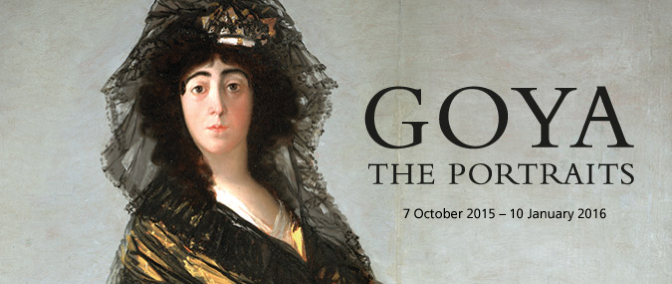
The National Gallery’s latest paid for exhibition is Goya: the portraits. Fifteen years in the planning the exhibition brings 70 works from across the Spanish master’s portrait painting career to the dark, natural-light-free galleries in the basement of the Sainsbury wing. He only started portrait painting when he was in his thirties, but nevertheless had a sizeable output.

Seventy or so faces stare out from the walls, many displaying varying degrees of boredom. The Goya expert will delight to see so many works together. To the general viewer though it is a slightly monotonous flick through the aristocratic Spanish photo album circa 1800.
A contemporary innovation which adds some interesting introductions is the interactive Credit Suisse hoarding outside the gallery. Using QR codes your phone can tell you more detailed information about some of the sitters, including the Marchioness of Villafranca and Bernardo de Iriarte.
Goya creates his best works when he isn’t trying to impress or aggrandise his sitter. A small selfie and a lively image of his grandson are among the most memorable of the images on display, even though they are much smaller and much less admired than many of the aristocratic portraits. Lingering in the mind longest is the freely-worked self-portrait with his doctor, re-imagining the time when he was close to death.
But most rooms are full of formal portraits of Spaniards unknown, backgrounds mainly left a graduated grey or black. A few accoutrements find their way into the images – a child’s pets, a musical score – but mainly it’s a quick figure, a blank background and on to the next.
Goya clearly enjoyed painting the flamboyant dress of the period much more than the flesh. He was a great observer, providing smoothly rendered faces and much wilder, lively materials. All of the paintings come alive when he turns his attention to the clothing rather than the faces, none more so than when he uses a thick impasto to model a royal chain in almost three dimensions.
The art world could benefit from a little less nonsense. An example that could be lost occurs here in the audio guide. Talking of one subject painted standing alone in a room the narrator says, ‘…has he just come in or is he about to leave? Goya leaves the matter open.’ This isn’t as profound as the tones suggest.

Leave a Reply